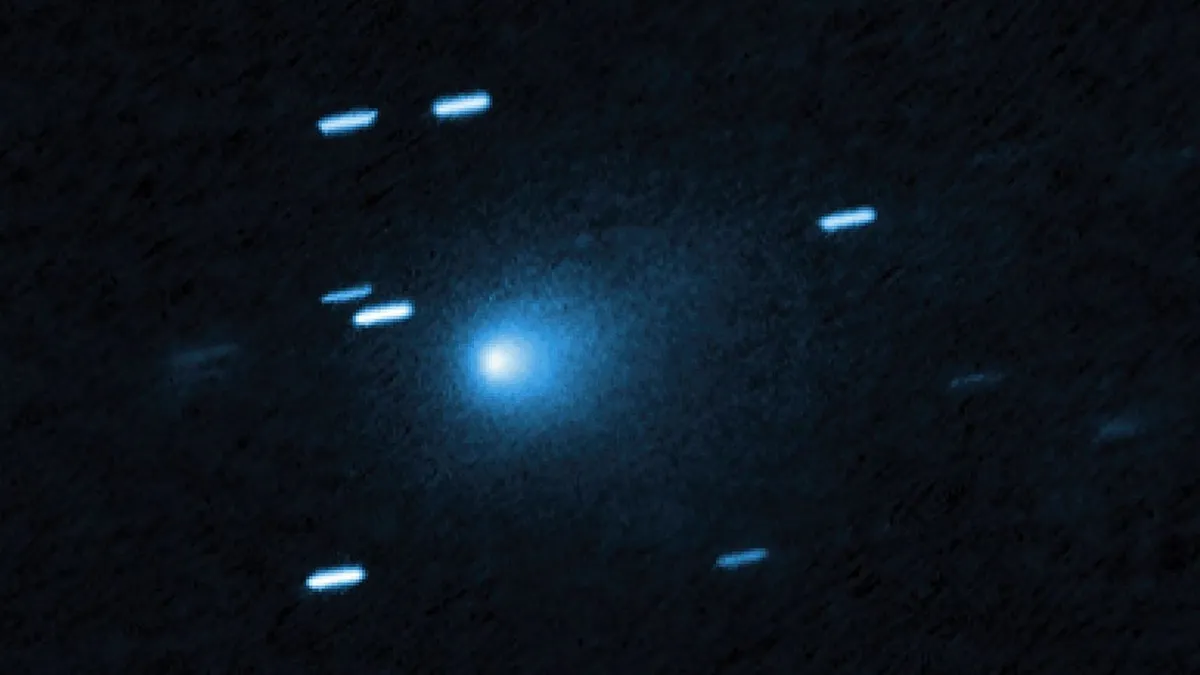
NASA has unveiled the most detailed images of comet 3I/ATLAS, an intriguing interstellar visitor currently traversing our solar system. Captured by the renowned Hubble Space Telescope, these images have provided astronomers with crucial insights into the size of this cosmic object, revealing that it is smaller than previously estimated.
First identified on July 1, 2023, comet 3I/ATLAS was quickly confirmed by NASA as an object originating from outside our solar system. This extrasolar entity is racing towards the inner solar system at incredible speeds, exceeding 130,000 mph (or 210,000 km/h). It is anticipated to make its closest approach to the sun in late October. Fortunately, there is no threat to Earth; during this close encounter, the comet will be positioned on the far side of the sun.
Comet 3I/ATLAS is only the third interstellar object detected in our solar system, sparking curiosity among astronomers regarding its origin and composition. David Jewitt, an astronomer from UCLA and the science team leader for the Hubble observations, remarked, “No one knows where the comet came from. It's like glimpsing a rifle bullet for a thousandth of a second. You can't project that back with any accuracy to figure out where it started on its path.”
In late July, the newly operational Vera C. Rubin Observatory estimated the size of this alien comet to be approximately 7 miles (11.2 kilometers) in width across its icy nucleus. However, the latest observations from the Hubble Space Telescope suggest that the nucleus is likely closer to a maximum of 3.5 miles (5.6 km) in diameter. Despite this adjustment, 3I/ATLAS remains the largest interstellar object ever identified.
On the lower end, NASA estimates the comet's size to be no smaller than 1,000 feet (320 meters) across. Further observations with the James Webb Space Telescope and other NASA observatories are planned, which will provide more accurate measurements as the comet approaches.
3I/ATLAS joins the ranks of two other known interstellar objects that have passed through our solar system: 1I/'Oumuamua, discovered in 2017, and 2I/Borisov, spotted in 2019. 'Oumuamua is believed to be around 0.2 miles (0.4 km) wide, while Comet Borisov has a nucleus measuring approximately 0.6 miles (1 km) wide, making both significantly smaller than the upper estimates for 3I/ATLAS.
Researchers aim to study these alien objects to gain insights into distant star systems and the characteristics of the exoplanets that orbit within them. By analyzing 3I/ATLAS and its counterparts, scientists hope to unlock mysteries about the formation and evolution of solar systems beyond our own.